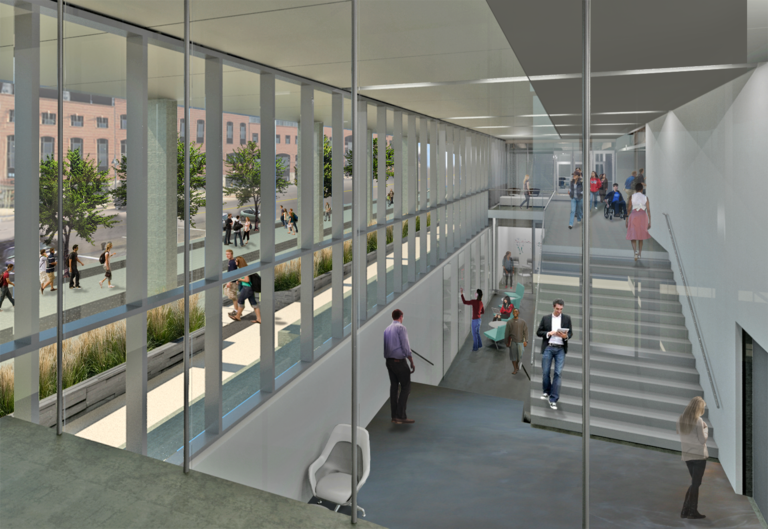On April 21, the Iowa Board of Regents’ granted approval of the description, budget, and schematic design of a new $33.5 million building for psychological and brain sciences and gave the green light to razing a portion of Seashore Hall that currently houses part of that department.
Construction of the new 66,470-square-foot facility at Gilbert Street and Iowa Avenue will begin in the summer of 2017. Completion is tentatively set for summer 2019. The project also includes razing a portion of the southeast wing of Seashore Hall, allowing for construction of the new building, which will eventually provide a direct connection to Spence Labs. The remainder of Seashore Hall will be taken down at a later date.
Jodie Plumert, professor and chair of the UI Department of Psychological and Brain Sciences, says functional study spaces to meet the needs of the department’s growing student body will be one of the most important elements of the new six-story, state-of-the-art building.

“It’s really important to me and to the whole project that we’re creating a home for undergrads and giving them a sense of belonging in the department,” she says. “They need to have a place to call home.”
Funding for the project will come from income earned on investments, campus-building-renewal funds, gifts, and research income generated by faculty.
The Department of Psychological and Brain Sciences has grown into the UI’s largest undergraduate department, with more than 1,200 declared psychology majors. It generates about $7.7 million in annual external grant funding and provides more than 22,000 instruction credit hours per year.
The department is currently housed in a cluster of three buildings: Spence Laboratories of Psychology, Stuit Hall, and Seashore Hall, which was built in 1899 as the university’s first hospital.
Plumert says her department has reached the limits of its current infrastructure, which must support not only the burgeoning interdisciplinary research programs of existing faculty but also new faculty being hired to meet pressing departmental needs.
“A new facility will allow us not only to keep pace with our peers but also expand our educational offerings and transform the future,” she says.
The new building will include 70-student and 30-student classrooms that can be combined for use as high-tech TILE (spaces to Transform, Interact, Learn, and Engage) classrooms.
With 15 cutting-edge labs for human research, the building will be better equipped for faculty and graduate and undergraduate students to conduct research. The labs will be clustered by areas of research to promote collaboration and interaction and will, with its new family waiting area, provide a more “welcoming and friendly environment” for parents with children who are waiting to taking part in research projects, says UI Psychology Professor Bob McMurray.
“The labs are not just important for the Department of Psychological and Brain Sciences; they impact other UI departments,” Plumert says. She notes that psychology is a “hub discipline” that exists at the intersection of neurology, biology, computer science, and other natural health sciences.
The new building also will be a gateway to the east side of campus. Glass doors and a plaza will welcome students, community members, and visitors. Natural light will fill the space, lending a distinctly open and modern feel to the department’s physical home.
“As the field evolves and new research techniques are developed, potential students will want facilities that have those resources,” says Elizabeth O’Neal, a Ph.D. candidate in the Department of Psychological and Brain Sciences.
There will also be a student learning commons, conference rooms, and four small breakout rooms designed to augment instruction during the day and provide study space in the evenings. The second floor will house the department’s offices and its administrative staff, while the third through sixth floors will accommodate laboratories and associated offices and work space, as well as building systems and room for smaller student collaborations.
The learning commons and open spaces on the ground floor and lower level will be visible from the street, and a building overhang will shelter an outdoor gathering area adjacent to the sidewalk along Iowa Avenue. The four upper floors will be made of an easy-care terracotta panel system in warm earth tones, designed to shade the windows of offices and labs.
Professor Michael O’Hara says that during his 35-year tenure, the Department of Psychology and Brain Sciences has been a leader in research and training at both the undergraduate and graduate level.
“With a new facility—one that matches the caliber of the program—UI psychology will continue to provide a nationally leading education and prepare its graduates for professional success,” he says.
